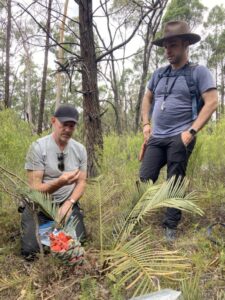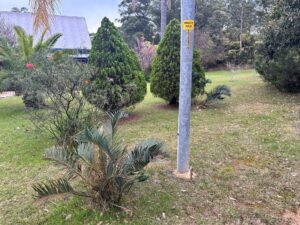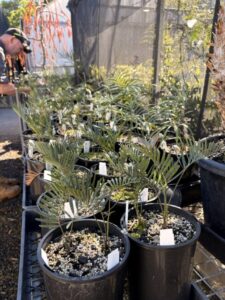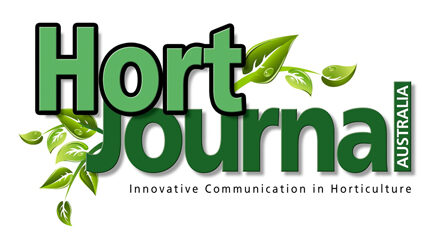
Securing the future of Macrozamia: from field to living collections
By Tim Uebergang & Georgie Moyes
Cycads are the ultimate survivors. Dating back over 280 million years, these ancient Gymnosperms have witnessed mass extinctions, continental shifts, and the evolution of flowering plants. Despite their resilience, cycads are now the most threatened organism on the planet.
They span tropical and subtropical regions of Africa, Asia, the Americas, Oceania and the Caribbean. Australia is a stronghold of cycad diversity, home to species from all three cycad families: Cycadaceae, Stangeriaceae, and Zamiaceae. The genus macrozamia, also called Burrawang in the Dahrug language, has evolutionary and cultural significance. With around 41 species, it is the largest cycad genus found in Australia, with its distribution spanning the east coast, and stretching into central and Western Australia.
Despite their reputation for endurance, Australia’s cycads are under increasing pressure from habitat loss, land-use change, climate change, and illegal poaching. Many species face an uncertain future, and outdated conservation data means we don’t know how dire their situation is.

Recognising the urgency, the Royal Botanic Gardens Victoria (RBGV) launched the Macrozamia Conservation Collection Plan (MCCP) in 2023. This ambitious commitment aims to build a genetically diverse ex-situ collection of macrozamia and reassess their conservation status, particularly in New South Wales, where data is severely outdated. In many cases, existing assessments date back to fieldwork conducted in the 1990s by botanist Dr Ken Hill.
The RBGV’s living collections form part of a global safety net, ensuring that genetic material is preserved and available for research and restoration efforts. Melbourne’s Landscape Succession Strategy and the expertise of the Horticultural team make the RBGV an ideal place for this work, especially as Melbourne’s future climate closely aligns with that of some NSW macrozamia species.
Cycads are uniquely adapted to survive tough environments. Their modified coralloid roots host cyanobacteria that extract atmospheric nitrogen, allowing them to thrive in nutrient-poor soils. To conserve water, they are able to control their stomata (leaf pores) to reduce water loss during the heat of the day and open them at night, an adaptation for surviving dry climates.
Despite these evolutionary advantages, macrozamia faces mounting threats, with wild populations being pushed to the brink. RBGV has partnered with Western Sydney University through the Global Conservation Consortium for Cycads (GCCC) to better understand these pressures. This collaboration has accelerated conservation efforts by facilitating DNA sampling, biological collections, and knowledge-sharing among global botanic gardens.
Fieldwork remains essential. In 2024, two RBGV Horticulturists conducted IUCN Red List assessments across three expeditions in the Blue Mountains to evaluate the status of Macrozamia elegans. Historical herbarium records indicated nine populations existed, but only five were located. Of those, just three had sustainable populations, while two appeared to be functionally extinct due to critically low genetic diversity.

During these assessments, the team monitored recruitment rates, population dynamics, disturbance levels, and the health of surrounding vegetation. The surveys uncovered clear threats, including urban expansion, habitat fragmentation, dieback, infrastructure development, and climate change. These findings were submitted to the New South Wales Threatened Species Scientific Committee and to the IUCN with a formal recommendation to list the currently unclassified Macrozamia elegans as Critically Endangered.
The goal is clear: to ensure all Macrozamia species have up-to-date conservation assessments and are safeguarded in living collections grown in gardens and held in nursery collections. These collections act as insurance policies, banks of genetic diversity that can be used for research, restoration, and education.
Looking ahead, the GCCC plans to deepen partnerships with policy makers, local botanic gardens, Indigenous communities, and landholders to drive meaningful conservation outcomes on the ground. At the same time, RBGV is working to expand its herbarium capabilities to store macrozamia pollen, a crucial step as their seeds, like those of oaks, are recalcitrant and cannot be stored in a seedbank.
RBGV envisions a future where these species are not only surviving, but are thriving, protected in the wild and safeguarded in botanic gardens. Achieving this vision will rely on strong collaboration, bringing together scientists, horticulturists, Indigenous knowledge holders, land managers, and global conservation networks. Through the GCCC and our ongoing partnerships, RBGV aims to protect these ancient plants from extinction.
Tim Uebergang
Team Leader Horticulture
The Royal Botanic Gardens Victoria
E: Tim.Uebergang@rbg.vic.gov.au
Georgie Moyes
Horticulturist
The Royal Botanic Gardens Victoria
E: Georgie.Moyes@rbg.vic.gov.au
